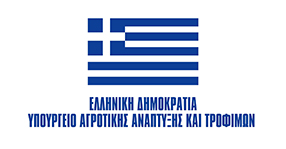On January 16, 1979 the members of the temporary administrative committee of PLEAM met and authorised three members, Giannis Koundouros, Khourdakis Antonis and Konstantinos Spithas, to meet with the Minister of Culture and Science in order to finance the Society for the establishment of a museum. On January 28, 1979, the Board of Directors was formed unanimously as follows:
Members:
On February 15th, 1979, the company’s secretary informed the board of directors for granting the use of a floor from the Metropolitan Property Management Organization building, an emblematic building of the interwar period in the central square of the town, in order to house the folklore museum.
The opening of the Folklore Museum of Neapolis takes place in a festive atmosphere on the 15th of August 1979 by the Secretary of the Ministry of Culture Mr. Nino, a day in which Neapolis celebrates the holiday of the 15th of August and the Metropolitan Church “Megali Panagia”.
The need to re-exhibit the Museum had already been raised as an issue in the early 2000s, due to the unsuitability of the building it was housed in (lack of auxiliary space, inaccessibly to people with mobility problems, etc.), as well as the need to greatly renew its exhibits.
A request was made to the Municipality of Neapoli at the time, for the use of the historic building of the High School of Neapoli, which had remained closed since 1984, when it ceased to be in operation.
The long distance that separates the idea from its implementation is due to the dystocia concession of the building at that time, part of which was granted only in 2011, by the Kallikratikan Municipality of Agios Nikolaos and the renovation of the building that needed adjustments to meet its new role (disabled access, media room, etc.). The architects, Sgouros Odysseas and Fouskis Kostis, the Civil Engineer, Kaffetzakis Giorgos, and the board of directors of PLAM, who were responsible for the re-exhibition of the collections, worked for its conversion. A product of collective and painstaking work, this project, which includes the modernization of the museum’s equipment, was completed on the 30th of December 2015. With a budget of 207,000 euros of the local leader Program, the support of the region of Crete, the Holy Metropolis of Petra and Herronissos and many professionals and individuals.
A focal point for the design, planning, and re-exhibition was the unified treatment and synergy of the building – shell with its particularities and the modules-exhibits, so that they are in a constant dialectical relationship.
The content and form of the exhibition –the structure, the seating, the scenography, the colours, the materials– have met with the rhythm and austerity of the geometry of the building. The aim is to transform the visit of the museum into a journey of tracing the past that the exhibition itself updates, giving the possibility of a personal perception of the historical and cultural routes of the place. The exhibition is supported by easy-to-understand thematic texts with autonomy, as well as the explanatory memorandum of the exhibits addressed to the needs of the general public.
The building bears the name “Old High School of Neapoli”. It was built in 1870, during the last period of Ottoman rule in Crete. The governor (pasha) of the area was Kostis Adosidis, who installed the capital of the Administration in “Kainourgio Chorio”, after renaming it Neapoli and designing and building public buildings to house all services.
This building was originally intended to house a hospital. However, after the departure of Adosidis in 1874, the local residents made the decision for it to house of the High School instead. From then and until 1984, that is, for more than a century, it continued to house the dreams and aspirations of hundreds of young people, who hoped to improve their lives through their studies. It remained the only High School in the prefecture of Lassithi until 1916 with great teachers and graduates given the opportunity to enrol in the University of Athens without entry examinations. The Old High School of Neapoli has been designated as a historical monument. It is a single-story, stone building with a wooden, ceramic-tiled roof. Its floor plan is in the shape of the Greek letter Π enclosing an atrium. Around the atrium is a peristyle that serves as a pathway between the two parallel legs of the building.
Read more about Neapolis, PLEAM, Collections and many other intresting sections.





© pleam.gr All Rights Reserved. | Made with ❤